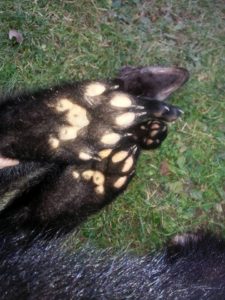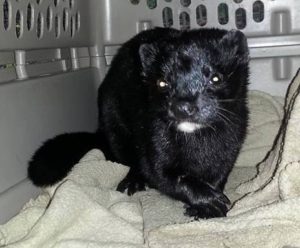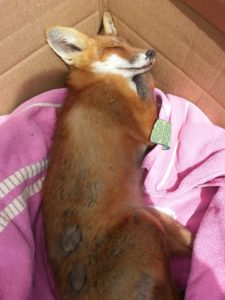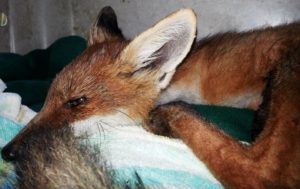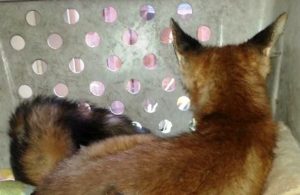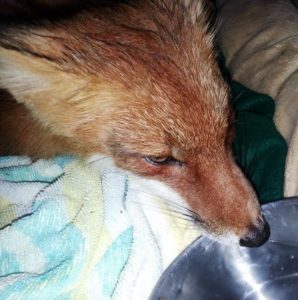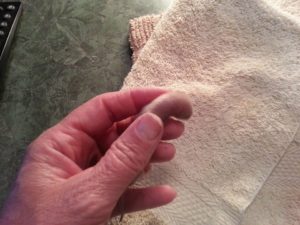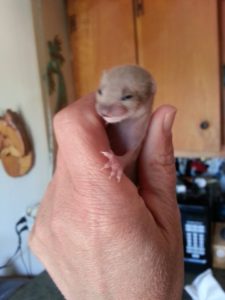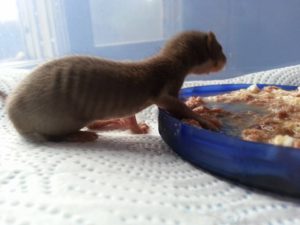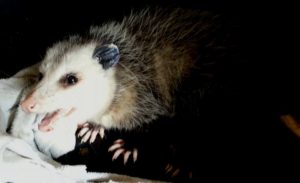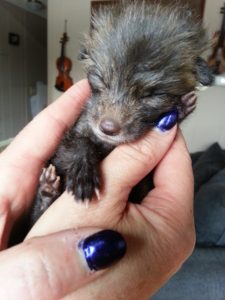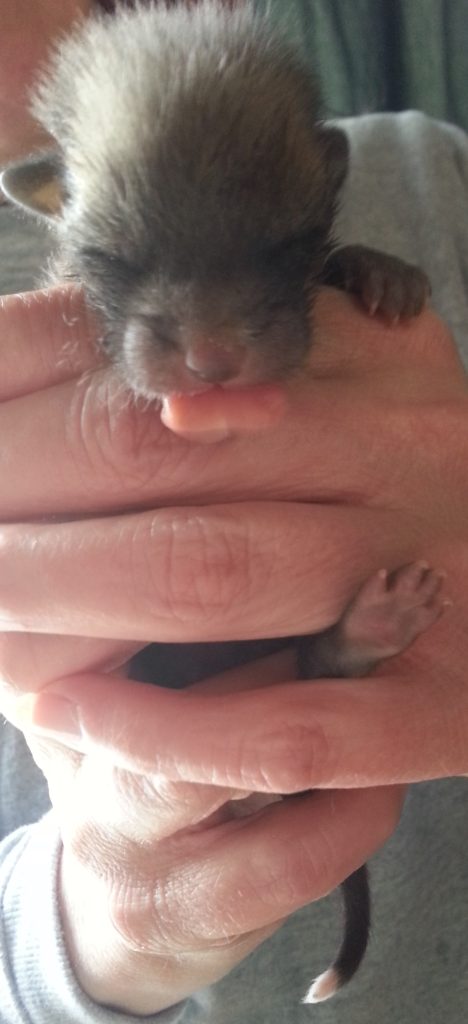Coyote and urine can be used to humanely save lives! January, February, March, April and May are the best times to use predator urine to get unwanted wildlife families to move from unwanted areas. Coyote urine can be used to get a mother fox, raccoon or skunk to move her young. This will save you money, aggravation and neighbor complaints, by convincing the mother of the young that she must move her babies to a safer location because the coyote urine will make her think that they are in danger where they area. Through the years, I have gathered urine soaked bedding material from my coyote pens to give to people that were having issues with wildlife. They have used the urine to encourage raccoon mothers to safely relocate their young without having to trap the female and then destroy the young left behind because they didn’t realize she had young.
In New York State, wildlife rehabilitators have to be specially licensed to raise orphaned raccoons and because of the prohibitive requirements only a handful of rehabilitators for orphaned raccoons exist. These rehabilitators get filled up to the maximum # of baby raccoons they can handle very early in the year. that leaves hundreds of thousands of orphaned baby raccoons and the people who find them without options. These numbers could be greatly cut if people would use a combination of light, noise and coyote urine soaked bedding material to encourage momma to find another location to raise her young. Many wild mammals do not want to keep their young in an area where there are predators such as coyotes and foxes. Foxes don’t want to raise their young where there is a coyote roaming nearby. If a coyote finds a littler of young fox, it will kill them. They do this to ensure there is enough prey for their own pups. Sprinkling coyote urine soaked materials near a red or gray fox den will encourage momma fox to move her pups to a “safer” location.
Recently, a friend of mine had chipmunks chew the wire harness of his brand new truck causing some very expensive repairs that were not covered under the warranty. It seems the new harness coating is “environmentally friendly” and tasty to rodents. He had the problem repaired, with new “environmentally friendly” wire harness coating. Worried it would happen again, he picked up some coyote urine soaked material and put it into a metal box with holes in it. He placed this under his truck in the parking spot. Interestingly enough, not only have chipmunks not chewed the new harness, but he hasn’t even seen a chipmunk anywhere near his house since. Prior to that, there were many, many of them in his wood piles and such.
Many people have come to get coyote urine to keep deer, rabbits and woodchucks from eating their garden vegetables, hostas and flowers.
I am offering coyote and fox urine soaked bedding to the general public via my website “Tip Jar” . It is a cruelty-free product and unlike the fur farms and trappers where coyote and fox urine is gathered now, my coyotes and foxes live comfortable happy lives at my sanctuary. Call it “happy pee” if you want, but it sure works, and smells and performs better than the bottled stuff created by animals under stress or killed. I will gather it fresh when I get a request, and ship it out that day. The money raised will go straight toward the care of injured and orphaned wildlife and also for making the living conditions for the permanent coyote and fox residents better and happier for them.
At present, I will mail the urine soaked bedding in a gallon zip lock plastic bags in a padded envelope for $40 , includes shipping and handling. It can be purchased by clicking on the tip jar on the home page, and donating $40 to Fox Wood. Write a brief note and tell me if you prefer coyote or fox urine. You may ask me any questions by e-mailing me at : foxladye@yahoo.com


